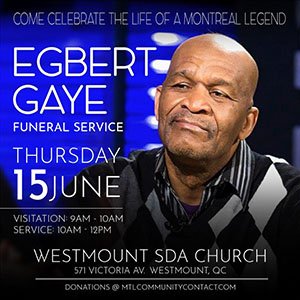Book Review
H. Nigel Thomas, No Safeguards. Toronto: Guernica Editions, 2015. 298 pages
H. Nigel Thomas’s No Safeguards, depicts the lives of two brothers, Jay and Paul and the realities they face existentially in a harsh, sterile environment in St. Vincent. We are able to understand their development through their relationship with a loving grandmother (Ma Kirton), a battered and struggling mother, Anna, and an abusive father cum preacher in Caleb. Caleb beats Anna and his first son, Jay, without the slightest provocation. This dysfunctional family is immersed in a psychology of abuse and fear. Central to this sociological dilemma are all the social ills that corrode self-actualization and self-fulfillment: patriarchal domination, lack of emotional, economic and psychological support by the father, the lack of civil rights and the imposition of religious based values.
Thomas uses a flashback structure to order the events of the novel. It begins with Anna’s dying and Paul being away and ends with his leaving again for Guatemala. Interpolated between these two fictional points, Thomas is able to weave a story which demonstrably paints the human condition in St. Vincent and indeed universally. Religion seems the only solace for the poor Blacks in the island. It appears to be a cure-for-all for miserable, broken and unfulfilling lives, but Thomas shows that religion instead of providing hope and freedom, blocks the escape route. In his two latest books, When the Bottom Falls Out and No Safeguards, the author brings into sharp focus the effects of familial alienation, separation, immigration and acculturation.
The writer is abhorred by all forms of abuse, whether physical or verbal, since both are damaging to the psyche. Caleb beats Anna and Jay. Ma Kirton, her mother, encourages her to divorce Caleb and sends her to Canada for safety. Caleb’s problem is his limited understanding of the Bible and its principles of love, caring and forgiveness. His sardonic and ironic interpretation of church doctrine emanates from fundamentalist Pentecostal dogma which Thomas views as suffocating and burdening to poor Blacks and the poor among the Indian population of Guatemala: “Here you see that religion is indeed a burden. A burden people here take seriously” (p.206).
Poverty brings with it many social ills: violence, neglect, depravity and lack of ambition. Despite Jay’s brutal treatment, he is able to grow up having a rational worldview. Much of his life is influenced by a protective and loving grandmother who shields Jay from his father and boosts Paul’s ego. It is interesting to note both Jay’s early teenage development and Paul’s. Paul is carefree and brilliant and the villagers in Harve call him “Ma Kirton’s genius.” Jay has a determined and quiet resignation to life’s vicissitudes. Ma Kirton eventually sends the boys to Canada to re-unite with Anna.
The re-unification shows the difficulty of creating a seamless transitioning after many years of separation. Paul is alienated from his mother, becomes disrespectful and causes her much distress until her death. Jay on the other hand is the dutiful, caring son who doesn’t always agree with Anna, but acts as the arbiter between Paul and her. Paul’s disaffection with life in Canada stems from his lack of knowledge of Anna’s plight in St. Vincent, her hurt of leaving them behind and her not being there for them in their formative years. Paul struggles with life in Montreal. His academic performance declines in some areas. He joins a gang, abuses drugs, disregards school authority and becomes anti-social. These attitudes are clearly symptomatic of children who are unable to bond with parents after years of separation. Jay tries his best to explain that Anna’s departure from St. Vincent is a means of protecting Jay from abuse, but he only understands its meaning after her death: “The son for whose health Ma ended her marriage rejected her” (p. 222). When siblings fail to bond with parents, they tend to rely on each other more. Jay as an older brother stands by Paul and supports him all the way. Paul’s reviling of Jay is a cry for attention and Jay hangs on until Paul is mature enough to look after himself.
I want to present a caution to readers by stating that the novel is not about homosexuality. The events are real and endemic to all sorts of families. In fact, while we suspect that Jay is gay, it is not until chapter 27 that Paul reveals his homosexual passions. The novel’s appeal is therefore its universal application of separation and attempts at reunification among parents and children, no matter the age. Paul’s psycho-social development is stymied by his perception that he is abandoned by his mother. Thomas is adept at teasing out these emotions and presenting them to the reader in a realistic manner. He is effective in foregrounding the issues and developing characters to relate the human condition. A self-professed atheist, Thomas uses the Bible and hymns quite effectively in pointing out the oppressed nature of the poor in St. Vincent and by extension the world, through their slavish adherence to a religious movement which may be summed up as bad for their economic, psychological and mental well-being. He also uses proverbs and local sayings to embellish the language
No Safeguards is a fascinating, quick read. It is a must for those who deal with the disruptive, disengaged, displaced children and their family relationships.
Horace I. Goddard
Horace Goddard is a Montreal writer. He is the author of The Journey Home, One People: Two Worlds Apart,(Poetry) and Child of the Jaguar Spirit (novel).
















